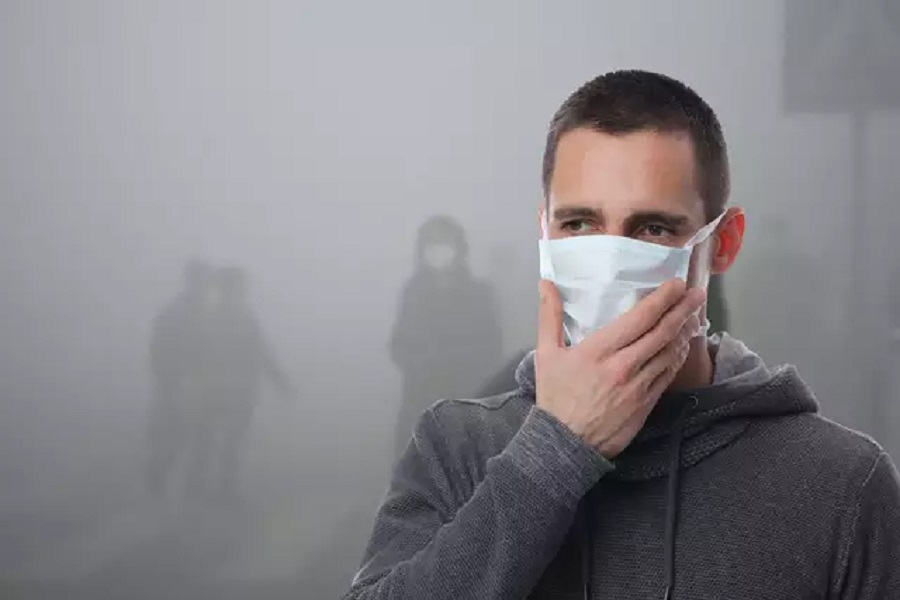Living in a Gas Chamber
Date :05-Jan-2020

By Anshuman Bhargava :
The more there is the growth of urban paraphernalia and economic prosperity, the more people are going to get vulnerable to environmental hazards because of more reckless living and scarcity of resources.

THOUGH Delhi is on the radar of all news channels for its exorbitant pollution levels, many other Indian cities are more or less on the same pedestal or on the verge of slipping into the red anytime soon. Measures that are taken in Delhi, hardly find their resonance in these lesser cities and hence pollution grows unabated in these places. A study conducted by IITDelhi has found that the annual mortality rate is 200 persons per year for every 1 lakh population in urban UP, Bihar and Jharkhand due to worsening air quality. The level of PM 2.5, is more than two times of its National Annual Standard and eight times of the WHO’s annual permissible limits in all the 11 studied cities.
We are witnessing a public health emergency in our cities as polluting air is choking our lungs. State and Union Governments need to create a national clean air action plan which is ambitious, effective and focuses on time-bound implementation. The report has indicated an increase of 28.5 microgram/m3 in PM 2.5 in the last 17 years in Varanasi.
The rate of increase of PM2.5 is ‘alarming’ in Meerut, Agra, Lucknow, Gorakhpur, and Patna. PM 2.5 are airborne ultra-fine particulates, measuring less than 2.5 microns, which can cause irreparable harm to humans by entering the respiratory system and subsequently the bloodstream. It is mostly generated by vehicular and industrial combustion. With the phenomenal explosion in population and resultant vehicular and industrial growth in the last two decades or so, the urban infrastructure of million-plus cities like Patna, Guwahati, Gwalior, Agra, Varanasi, Allahabad, etc. is collapsing. The green cover has vanished, leading to serious consequences on our health as there is no carbon sink to absorb the polluted air and release clean air. There are hundreds of poor homes in the slums and the cities’ peripheries which still use sooty chulhas for cooking instead of clean fuel.
Children as young as five are contracting lung diseases due to the poor air they breathe. With one in ten people predicted to live in cities of over 10 million inhabitants by 2030, urban forests can make these spaces healthier and more affordable. The benefits of urban forests could nearly double if more trees were planted in areas such as sidewalks, plazas and parking lot. With over 700 million people living in the world’s 40 megacities, lack of greenery can portend grave dangers to them and their progeny. We are woefully short of green cover in our cities. Governments and civic bodies are inherently negligent towards the spread and promotion of greenery. Trees are the first casualties no matter if it is a new road that has to be laid or a building that has to be constructed.
A good excuse for the Government is that an equal number or double the number of trees chopped in cities would be planted elsewhere. But the loss of trees in cities is a loss that a plantation drive somewhere else cannot compensate. Moreover, a full-grown tree’s attributes cannot be shared by a new tree that will take a decade to grow to that stature. It is said that a mature tree can absorb about 23 kg of carbon dioxide in a year, which over its lifetime, is the same amount as released by a car for about 42,000 km of running.
A tree such big can produce over 2,720 kg of oxygen per year, which is enough to support two lives. Moreover, as trees grow older, their capacity for carbon absorption increases. Can a new sapling cover all these utilities? If trees have to be cut as a last resort, then plantation drives should also be taken up around the same area, so that the city ecology is not disturbed by much. Plantation drives have to be made more serious and consistent by all States. We talk of urban renewal and regeneration but trees and green buildings hardly picture in the scheme of things.
Our priorities shift at infrastructure building, employment generation, and communication pathways but the green angle is often sidelined. Poor air quality is a recognised global public health epidemic, with levels of airborne particulate matter in Delhi spiking to 20 times the World Health Organisation’s safety threshold during certain days. Researchers say in five years, the economic loss due to the burning of crop residue and firecrackers is estimated to be USD 190 billion, or nearly 1.7 percent of India’s GDP. Carpooling and lessening the use of private vehicles has still not largely clicked in any big way in most cities. The use of solar, biogas and wind energy also are not seen in any big way yet.
The more there is the growth of urban paraphernalia and economic prosperity, the more people are going to get vulnerable to environmental hazards because of more reckless living and scarcity of resources. Cities, on the other hand, have little space or scope to expand. Patna, Guwahati, Kolkata, Mumbai, Delhi, Bengaluru, Agartala, Lucknow, Kanpur, Varanasi, Pune, Srinagar, Jaipur are bursting at the seams and bounded by hills, rivers or seas as these cities are, there is little maneuvering space they have at their disposal. The result will be a very high concentration of population in a very limited area, lending little opportunity for establishing an environmentfriendly ecosystem in them.
This is what actually the reality is today. Long political sluggishness and policy paralysis along with lack of scientific research and haphazard urban planning etc. have put us on the back foot. The Air Quality Life Index (AQLI) developed by the Energy Policy Institute at the University of Chicago (EPIC), says Indians could live four years longer on average if its air quality meets WHO standards. Delhi has long switched over to CNG for all its public transport vehicles and the spread and use of the metro railway network has been phenomenal. It has also experimented with the oddeven vehicle usage formula like many cities of the world so that there is lesser number of vehicles on the roads and more people use the public transport system. Yet the continually growing numbers of vehicles on roads offset the corrective measures. Along with this, rapidly growing urbanisation, consequent population pressure and dominance of concrete jungle over natural greenery, are taking a heavy toll on Delhi’s environment.
The only way ahead perhaps is to stop the sales of diesel vehicles to start with and then ban petrol vehicles in phases. All cars must go CNG or electric. A more elaborate public transport network too should be established. Dust from construction works and industrial smoke are also major factors contributing to environmental degradation and these are allowed to operate unbridled. There must be a national programme to address the issues of these cities collectively. Ways must be found to decongest cities first, which will naturally reduce vehicular and pollution pressure.
People need to spread out, rather than concentrating in one place. Second, the public transport system must be spruced up so that people are encouraged to use them. For that, we also need ample and good road networks, for which too we are short of space and need massive realignment or anti-encroachment drives which are problematic propositions. Several projects are hanging fire for decades for lack of execution. Meanwhile, the growth of population and vehicles continue unabated. No urban settlement today in any civilised nation is considered complete without sufficient provisions and sources of clean air and water. India, despite having a continually surging urban growth trajectory, has still no concrete plans in place to save lives.